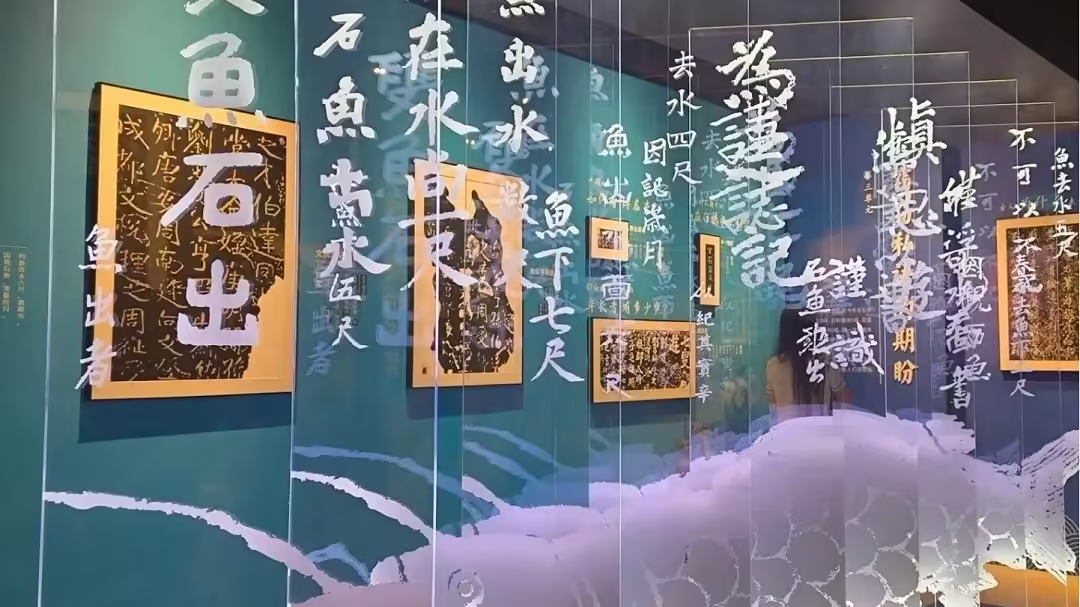The Three Gorges Museum (重庆中国三峡博物馆) in Chongqing is a must-visit for anyone with a passion for history and culture. Spanning multiple floors, it offers a comprehensive view of China’s history, local traditions, and the grand Three Gorges. Visitors can explore unique exhibits that reveal the art, cultural artifacts, and historical events that shaped the region. With a full day’s worth of exhibits, breathtaking murals, and detailed information about the museum’s essential artifacts, this guide will help you make the most of your visit.
Opening Hours: 9:00 AM – 5:00 PM, closed on Mondays. Last entry is at 4:30 PM.
Admission: Free, but reservations are required through the official WeChat account.
Getting There: Take Chongqing Rail Transit Line 2 to Zengjiayan Station (曾家岩站) for convenient access.
Floor-by-Floor Museum Layout
The museum features four main levels, each offering distinct exhibitions with cultural and historical significance:
First Floor
- Magnificent Three Gorges Hall (壮丽三峡大三峡环幕): This hall welcomes you with a breathtaking panoramic view of the Three Gorges, showcasing the beauty of the Yangtze River and surrounding landscapes.
Second Floor (South Wing)
- Ancient Ba and Yu Civilization (远古巴渝): This exhibit delves into the early days of Chongqing’s Ba and Yu culture, displaying artifacts from ancient settlements and regional practices.
- Chongqing: The Path to Becoming a City (重庆:城市之路): This exhibit charts Chongqing’s journey from an ancient settlement to a bustling modern city, offering insights into the city’s development.
Third Floor (North Wing)
- Art of Ba-Shu Han Dynasty Sculpture (巴蜀汉代雕塑艺术): Explore the intricate stone carvings from the Han Dynasty that reflect the artistic expression and cultural values of ancient Ba-Shu.
- Ancient Coins and War Years (历代钱币、抗战岁月): Coins from different dynasties tell stories of trade and economy, while the War Years exhibit memorializes Chongqing’s role during wartime.
- Southwest Minority Cultural Display (西南少数民族风情展): This exhibit offers a glimpse into the cultural diversity of Southwest China’s minority groups through textiles, artifacts, and traditional costumes.
Fourth Floor (North Wing)
- Li Chuli Artifact Donation (李初梨捐献文物展): Showcasing artifacts donated by Li Chuli, this exhibit offers an intimate look at rare items with historical significance.
- Exhibits of Ancient Ceramics and Calligraphy (历代瓷器、历代书法): Find a range of ceramics and calligraphy through the ages, capturing the evolution of these traditional art forms.
- Robert van Gulik Family Donation (高罗佩家族捐赠文物): Displaying the artifacts donated by the family of Dutch sinologist Robert van Gulik, this exhibit enriches the museum’s collection with items significant to Chinese cultural history.
Must-See Artifacts
Han Dynasty Stone Gate from Wuyang Town, Zhong County (忠县乌杨镇汉阙): Located in the main hall on the first floor, this well-preserved stone gate is a rare piece from the Han Dynasty, showcasing intricate engravings.
Ming Dynasty Guan Yu Statue (明朝关公像): Originally placed in a Guan Yu Temple in Jiefangbei, this striking black statue was relocated to the Three Gorges Hall, where it adds to the grandeur of the first floor’s collection.
Kui Gate Oil Painting (夔门油画): Situated near the entrance of the Magnificent Three Gorges Hall, this painting represents Kui Gate, the entry point of Qutang Gorge, the first of the Three Gorges, located in Fengjie County.
Bird-Shaped Zun Vessel (鸟形尊): Found in the Ancient Ba and Yu Hall on the second floor, this bronze vessel was unearthed from a Ba noble’s tomb and illustrates how Ba people adapted animal-inspired ceremonial items from the Central Plains.
Tiger Button Bronze Drum (虎纽錞于): A favorite artifact among the Ba, this ancient percussion instrument features a tiger-shaped handle and was used to inspire soldiers during wartime.
Han Dynasty Brick (汉砖): In the Han Dynasty Sculpture Hall on the third floor, these bricks reveal aspects of daily life and aesthetics from this era.
Grey Pottery Drummer Figurine (灰陶击鼓说唱俑): Located in the Han Dynasty Sculpture Hall, this lively figure was excavated from Zhong County, Chongqing, and is notable for its expressive smile.
Tibetan Opera Costumes, Thangka, and Buddhist Statues (藏戏服、唐卡、藏传佛像): On the third floor in the Southwest Minority Hall, these pieces capture the religious and cultural practices of Tibetan Buddhism and the Tibetan people.
Visitor Tips
Reserve in Advance: It’s highly recommended to book your ticket early through WeChat, as same-day reservations are often unavailable.
Photo Opportunity: The Three Gorges Museum provides an excellent vantage point to capture a panoramic view of the People’s Great Hall, located just across the street.
Museum Souvenirs: Nearby the main entrance, there’s a drink shop selling beverages with museum-themed cups, priced around 30 yuan each.
Comfortable Shoes: Since the museum is large and there aren’t many seating areas, wear comfortable shoes for walking. For those needing a break, a nearby Thai massage center, Siam Spa, offers a relaxing foot massage (reservations recommended).
Collecting Museum Stamps
Bring along a small notebook for stamp collecting, a unique way to remember your visit. The museum has 46 free stamps located throughout the floors:
First Floor: 15 stamps by the entrance to the souvenir store, including the official museum stamp.
Three Gorges Artifacts Hall on the First Floor: 15 additional stamps, including stamps from affiliated museums.
Exit of the Magnificent Three Gorges Hall on the First Floor: 7 stamps at the corner.
Second Floor Souvenir Booth: 6 stamps.
Third Floor Souvenir Store: 3 stamps.
Nearby Attractions
People’s Great Hall: Located just opposite the museum.
Zhongshan Fourth Road: A scenic area filled with historical sites.
Jiefangbei, Hongyadong, Shibati, and Mountain City Walkway: These popular Chongqing spots are within walking distance, offering additional opportunities for sightseeing.
Local Dining Options
Hot Pot: Wenliang Hot Pot (文亮火锅), Lianjie Hot Pot (莲姐火锅), and Chen Pangzi Hot Pot (陈胖子火锅) are all popular, resident-style hot pot spots.
Specialty Dishes: Nie Facai’s Spicy Fish (聂发财来凤鱼) and Frog and Fish at Wayu Lang (蛙鱼郎美蛙鱼) near Shibati are local favorites. Another close-by option is Yizhi Shuangji Gong (一只烧鸡公).
Street Snacks: Try local snacks like tofu skin with chili, cold noodles, and crispy potato strips from street vendors.

